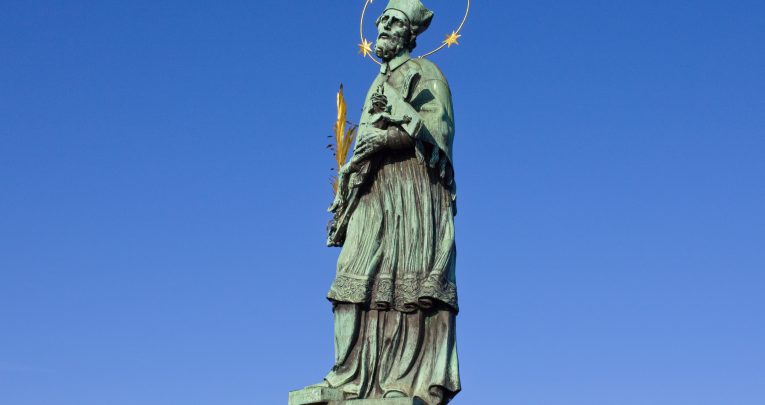Whole school RE – why we need it, and how teachers can benefit from it

Andy Lewis explains why devising a whole school approach to RE is important for faith schools, but can also deliver tangible benefits for many other settings…

- by Andy Lewis
- Deputy headteacher and director of RE at St Bonaventure’s School Visit website

Religious Education is a very diverse subject, and a relatively new one.
Formed from a range of contributing (and potentially competing) disciplines – including theology, philosophy, history and social sciences – it occupies an unusual position within school curriculums.
It’s compulsory, but locally determined. Excluded from the Ebacc, but in many schools a key facilitator of SMSC and British Values, sometimes extending into citizenship and PSHE.
In 1992, Saint Pope John Paul II called RE “The core of the core curriculum.” He went on to explain that for Catholic schools, RE is taught “Through the religious dimension of the school as a whole, and through the specific programme of religious studies which it provides.”
Seen in this way, RE is a whole school enterprise, rather than being limited to timetabled lessons. In effect, everyone is teaching RE.
The role of RE
Approaching RE as a whole school enterprise requires it to fit with the mission and ethos of the school. For schools with a religious character, commonly called ‘faith schools’, this may seem quite straightforward – in Catholic schools, for example – yet this is not exclusively the case. It’s possible to help drive the core values of any school through RE, and some adopt this approach with a key focus on their identity, values and sense of community.
It’s worth noting that ‘faith schools’ currently make up around a third of the 20,000 schools in England. Within these approximately 7,000 ‘faith schools’, 68% are Church of England schools and 30% Catholic, as well as Jewish, Muslim, Sikh and Hindu schools – though it should be noted that there is a wide range of diverse practice within Church of England schools.
Within the Catholic sector there have been significant calls for an authentically ‘Catholic Curriculum’ to ensure that it’s not just the responsibility of RE departments to teach religious content. For many faithful, their belief isn’t something to be compartmentalised into an hour or two per week, whether it be in the mosque, synagogue, church or RE lesson.
Curricular context
Pitched against this are the anti-Catholic points raised by some curriculum resources. In one high profile example, the BBC agreed to retract an erroneous detail from its Bitesize learning resources, describing how the church’s refusal to allow the autopsy of corpses was partly responsible for causing medical advances to stagnate (see bit.ly/2TKLKys).
Elsewhere, science departments could do something to challenge the ‘conflict thesis’ of science versus religion. If, for example, students knew that it was a Catholic priest, Mgr. Georges Lemaître, who formulated the modern Big Bang theory, and that the founder of modern genetics, Gregor Mendel, was an Augustinian friar, they might come to realise that there doesn’t have to be a binary ‘choice’ between science and religion. Small details like these could save RE staff hours of teaching time.
Teachers of English literature could in turn save themselves significant amounts of time with the aid of a carefully constructed RE curriculum covering topics that will provide context for key texts. Understanding the persecution of Shylock in The Merchant of Venice requires an in-depth knowledge of both Christiantiy and Judaism. Allusions and allegory are often taught using an assumption of Biblical knowledge.
Other examples include GCSE music courses that include choral settings of the Mass, A-Level Spanish units on Catholicism in Spain, and teaching around beliefs in society in A-Level sociology.
Religious literacy
For some, however, there’s an obvious counter- argument. Given that some subjects are so intertwined with religion – notably English and history – they cover sufficient study of religion as it is, and students will ultimately learn what they need to in order to get buy. Taking into account the rising levels of atheistic belief within the wider population, is this not the best way to cover these historic and outdated beliefs?
As I’ve previously argued in these pages, we don’t avoid studying active volcanoes in the UK because there are none that directly affect us, nor do we ignore the Victorian era because there is no one from that period left alive. If we’re becoming more non-religious as a society, that surely makes the need for good RE greater than ever.
Simply teaching RE as a by- product via other subjects, through a series of disconnected facts and snippets of information, will result in students missing out on big stories concerning various religions and faiths. Doing this also neglects the fact that according to the Global Index of Religion and Atheism, around 60% of the world still claim to be religious.
It’s impossible to understand the contents of our museums, art galleries and libraries without a robust knowledge of religion, and we can’t be confident that this will come from piecemeal teaching across history, art, music and English lessons. The teachers of these subjects have their own curriculums to be teaching, and will doubtless prioritise the order, breadth and depth of those curriculums based upon various other factors. It’s hard to imagine students becoming ‘religiously literate’ via this approach.
Coherence and synergy
RE has often tried to justify it’s curriculum position by taking the lead on the social cohesion that schools aspire to, colonising curriculum areas such as British Values, PHSE, citizenship and SMSC. Yet it’s worth remembering that most subjects on the curriculum will be doing this at the same time in different ways, and I genuinely believe RE has far more to offer than this.
RE as a whole school enterprise may work very well for ‘faith schools’ and perhaps be less necessary in others. But when we consider our curriculums in light of Ofsted’s recent reforms, it’s important to recognise the value of RE and the potential it can have for enhancing a whole school curriculum – the valuable context it can lend to other subjects, and extra critical engagement it can lend to virtually any subject you care to name.
Imagine the possibilities of a curriculum planned with synergy in mind, where students move between coherently linked lessons. There will still be clearly defined disciplines in place, but also careful interdisciplinary dialogue and work that ensures students always have the background knowledge they need – especially around religion – to access content effectively across multiple subjects.
If schools can get this right, it would be hugely beneficial for students. This, I would argue, is a ‘whole school approach’ to RE that’s appropriate for any school, but an imperative one for Catholic and other faith schools. To risk teaching religion – and by extension, the religious beliefs of your own community – inaccurately must surely be avoided as a priority.
When RE takes the lead
A head of RE will often lead a school’s charitable fundraising or volunteering programmes, and it’s not unheard of for a school’s priorities and mission to be intertwined with the RE department. It’s also likely that RE staff will be given at least some responsibility for a school’s daily ‘collective act of worship’ that is ‘wholly or mainly of a broadly Christian character’ as required by law.
The law in question was last revisited in 1998, however, and in practice isn’t upheld within many schools, leading to various calls for it to be repealed.
Andy Lewis is director of RE at St Bonaventure’s, East London, and author of Outstanding RE Lessons, published by Bloomsbury; follow him at @andylewis_re or visit mrlewisre.co.uk










